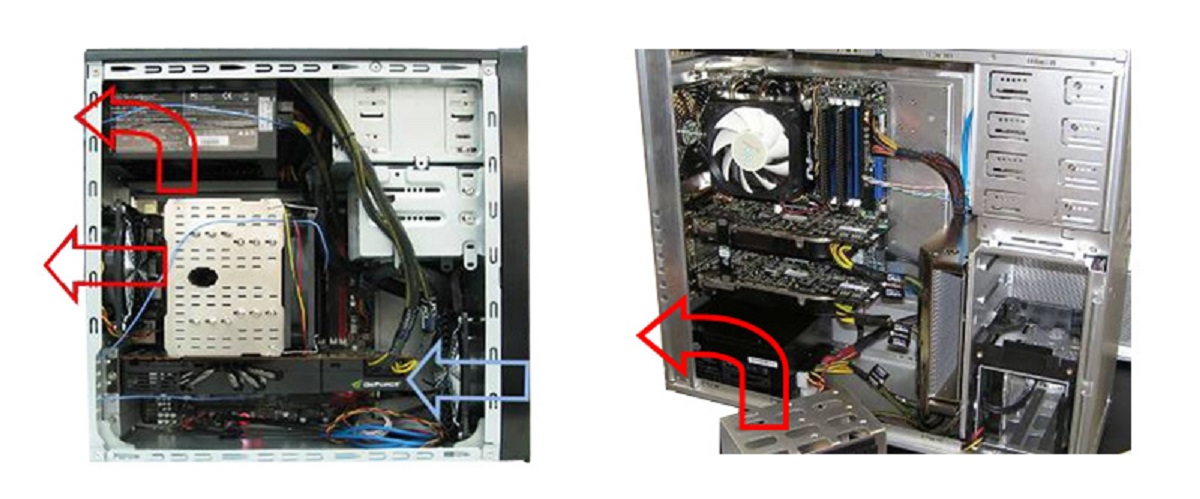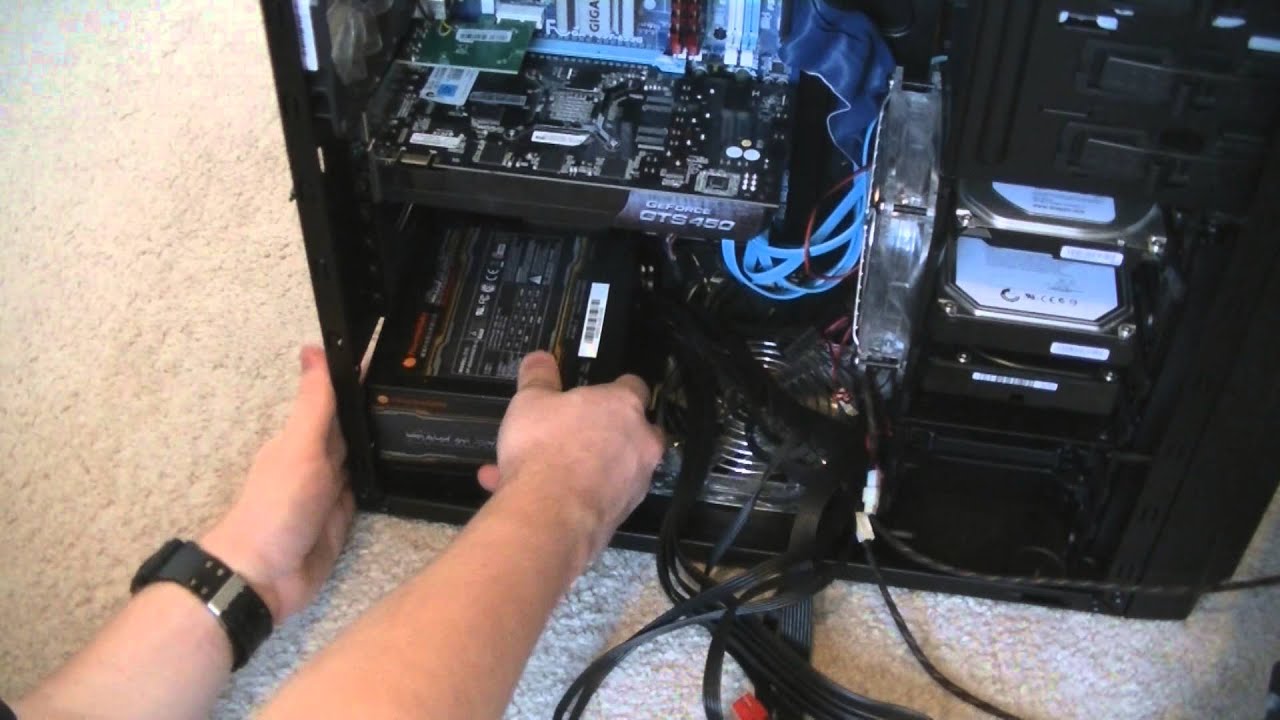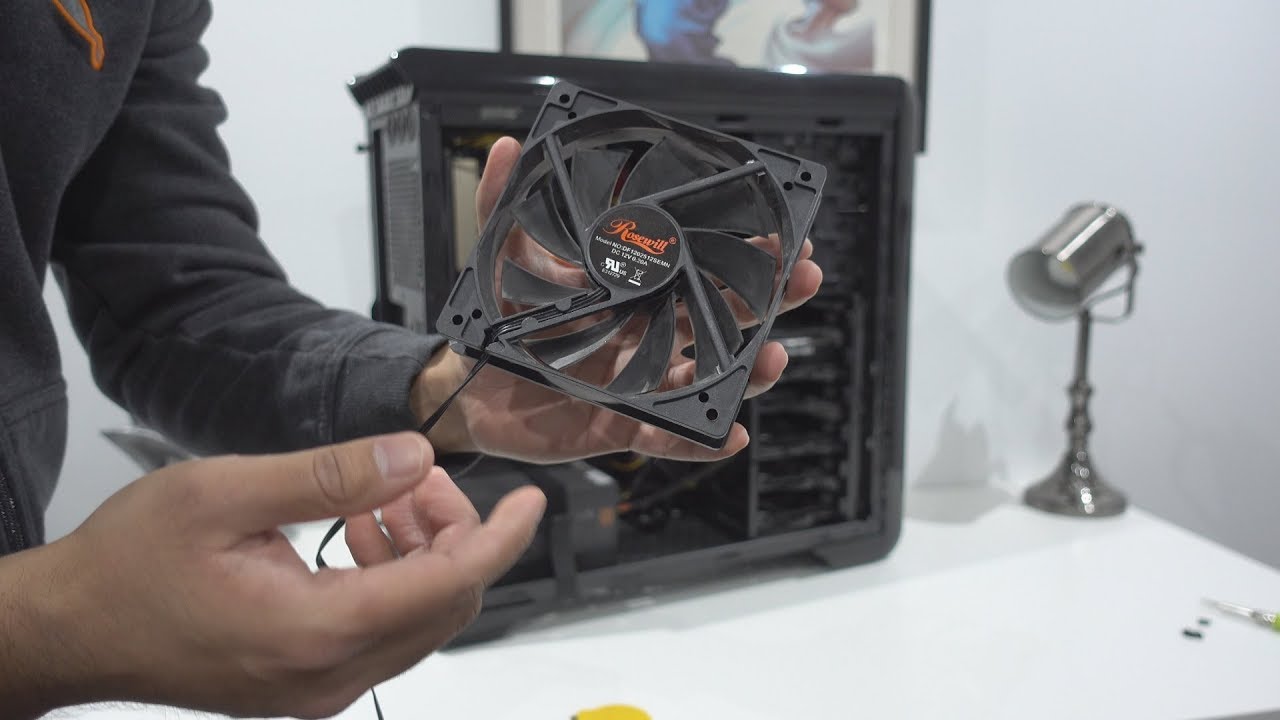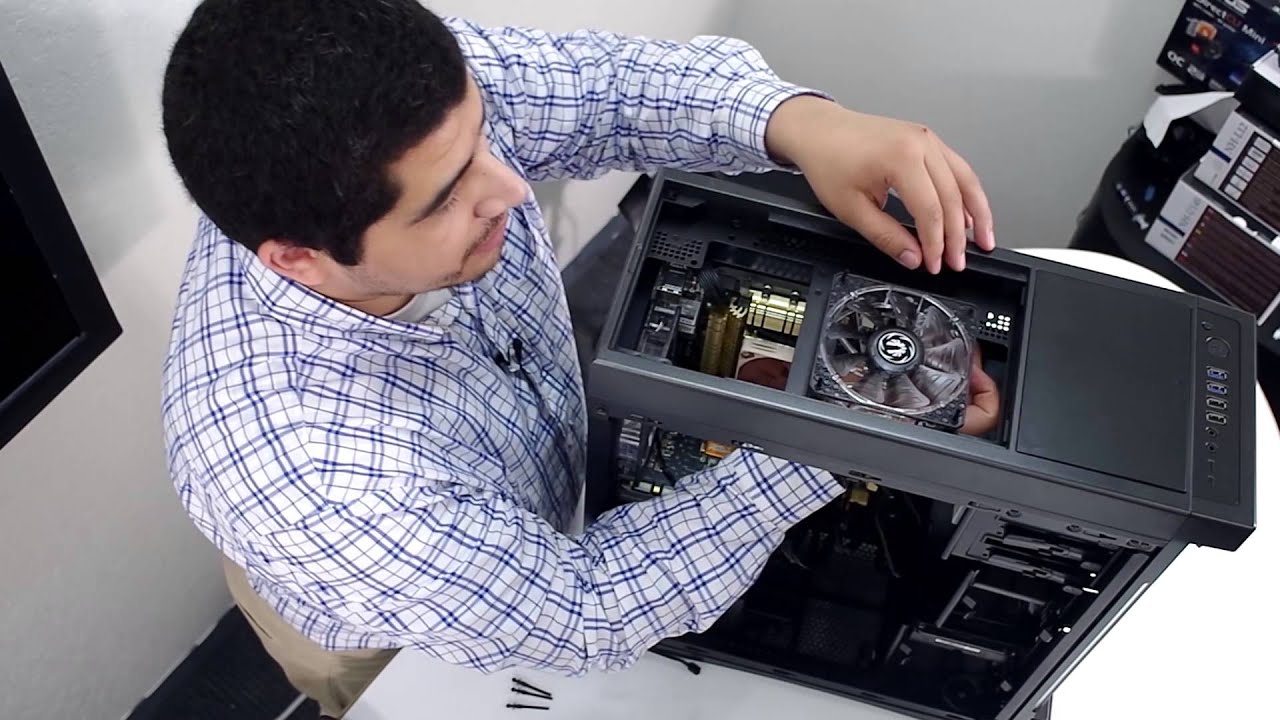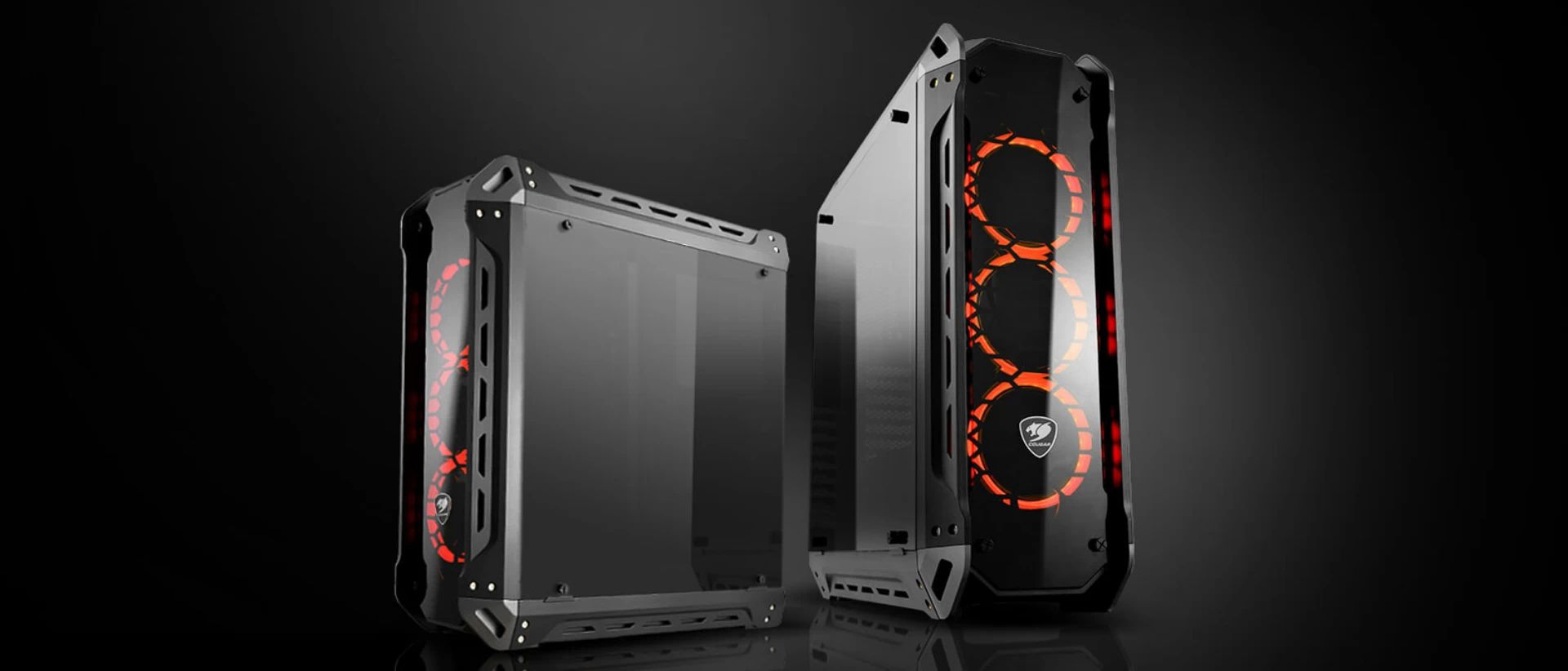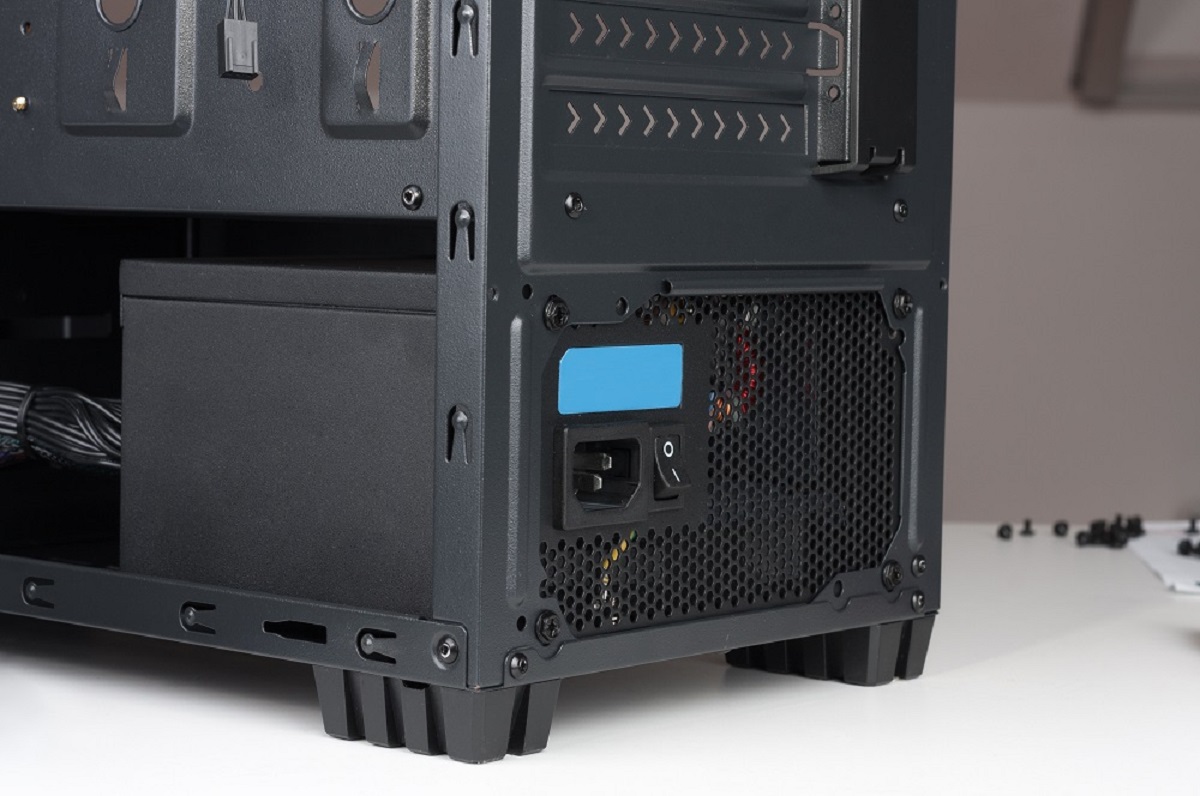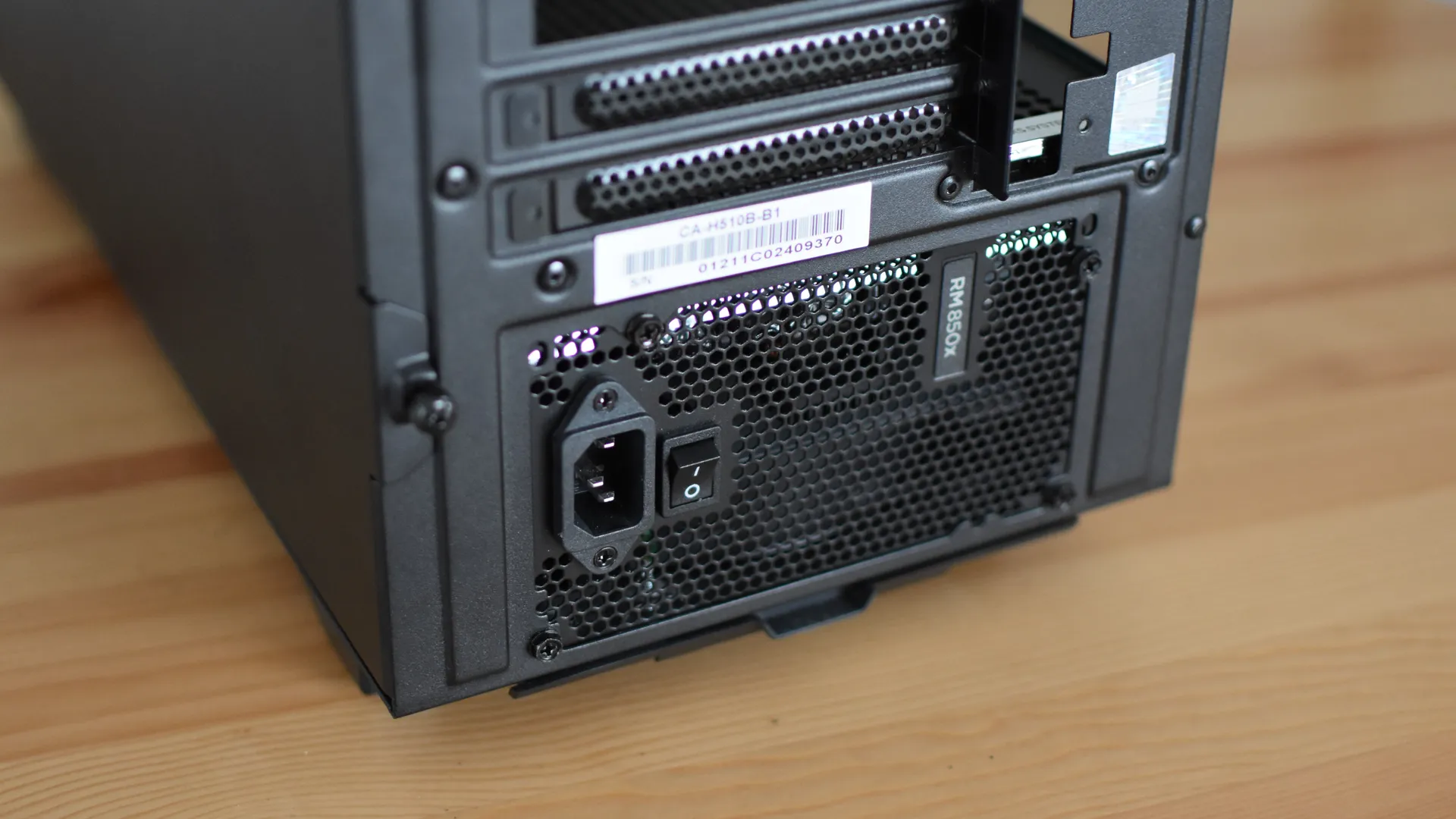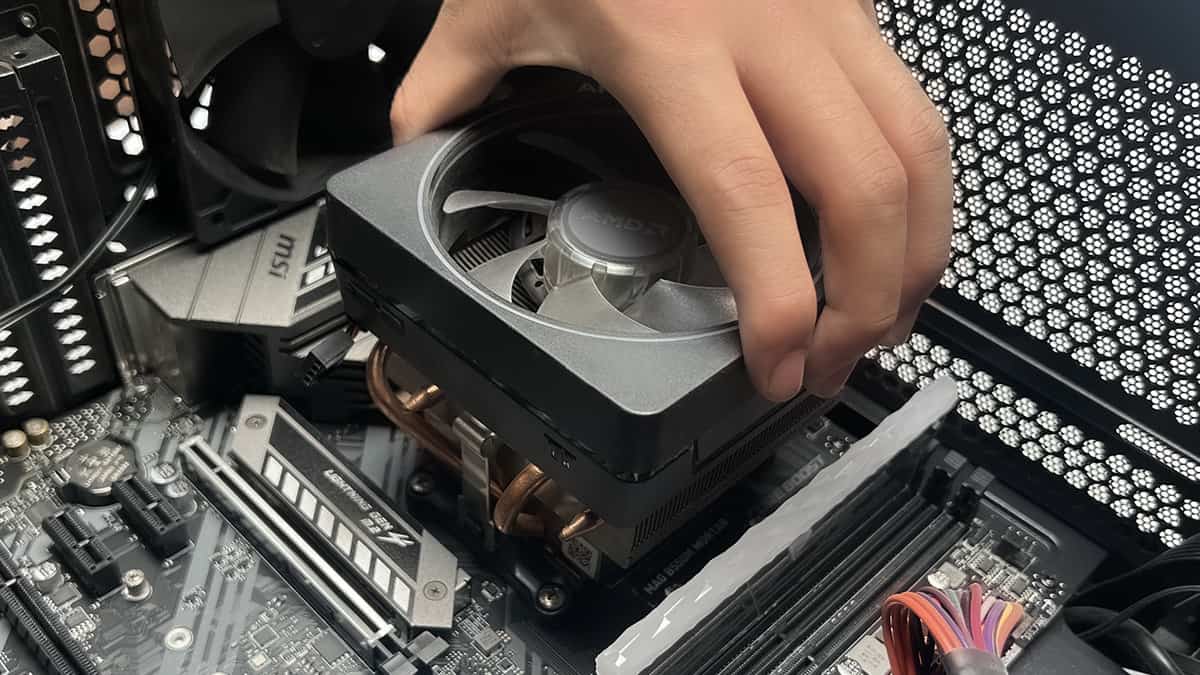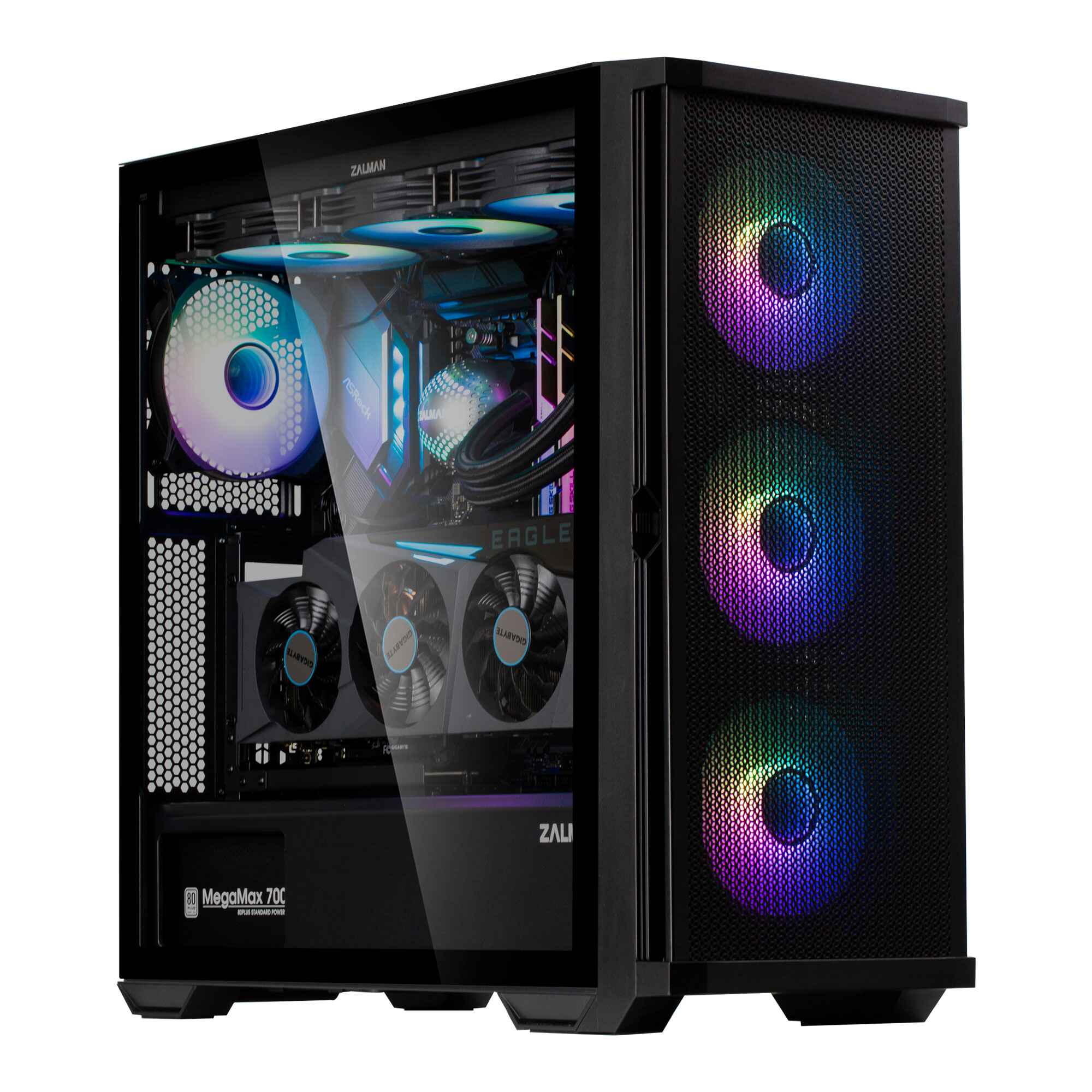Introduction
When building a computer system, one crucial aspect to consider is the placement of the power supply unit (PSU). The PSU is responsible for providing the necessary power to all the components of the computer, ensuring smooth and efficient operation. However, there is an ongoing debate about whether a top-mounted PSU or a bottom-mounted PSU is better.
Before delving into the advantages and disadvantages of each option, it is essential to understand what these terms mean. A top-mounted PSU refers to a configuration where the power supply unit is installed at the top of the computer case, typically near the back. In contrast, a bottom-mounted PSU is positioned at the bottom of the case, usually close to the front or back of the chassis.
Both configurations have their own set of advantages and disadvantages, which can significantly impact the performance and convenience of your computer system. By understanding the differences, you can make an informed decision on which option is best suited for your needs.
In this article, we will explore the benefits and drawbacks of both top-mounted and bottom-mounted PSUs. Additionally, we will highlight the important factors to consider when choosing between the two options, helping you make an educated decision.
Definition and Functionality of Top-Mounted PSU
A top-mounted power supply unit (PSU) is a configuration where the PSU is installed at the top of the computer case. It is typically positioned near the back of the chassis. This placement is a traditional design that has been widely used in computer systems for many years.
The primary function of the top-mounted PSU is to supply power to all the internal components of the computer. It receives electricity from the power outlet and converts it to the appropriate voltage levels required by the components, such as the motherboard, processors, hard drives, and graphics cards.
This placement offers several advantages. Firstly, it allows for efficient heat dissipation. By being at the top, heat generated by the PSU does not get trapped within the case, as it naturally rises and gets expelled through the ventilation system. This helps in maintaining lower temperatures inside the case and ensures better overall cooling performance.
Another benefit of a top-mounted PSU is that it simplifies cable management. Connecting power cables to the PSU becomes more accessible and neater, as they can be routed directly from the top of the case without running across other components or obstructing airflow. This improves the overall appearance of the system and makes maintenance and upgrades hassle-free.
Furthermore, the top-mounted PSU also aids in isolating electrical noise. Since it is positioned away from the other components, any electrical interference or noise generated by the PSU is minimized and does not affect the performance of sensitive parts such as the motherboard or graphics card.
However, it is important to note that there are also potential drawbacks to a top-mounted PSU. One concern is the potential risk of the PSU drawing in dust and debris from the top vents, which can accumulate inside the unit and lead to reduced efficiency over time. Regular cleaning and maintenance are essential to mitigate this issue.
Additionally, if the computer is placed on the floor or in a dusty environment, the top-mounted PSU may be more susceptible to collecting dust compared to a bottom-mounted PSU, which is less exposed to such airborne particles.
In summary, a top-mounted PSU offers efficient heat dissipation, streamlined cable management, and minimized electrical noise. However, it requires regular cleaning to prevent dust accumulation, especially in dusty environments.
Advantages of Top-Mounted PSU
Top-mounted power supply units (PSUs) have several advantages that make them a popular choice among computer builders. Let’s explore some of their key benefits:
- Efficient Heat Dissipation: One significant advantage of a top-mounted PSU is its efficient heat dissipation. By being positioned at the top of the case, heat generated by the PSU naturally rises and gets expelled through the ventilation system. This helps in maintaining lower temperatures inside the case and contributes to better overall cooling performance.
- Streamlined Cable Management: Another benefit of a top-mounted PSU is that it simplifies cable management. Connecting power cables to the PSU becomes more accessible and neater, as they can be routed directly from the top of the case without running across other components or obstructing airflow. This not only improves the appearance of the system but also makes maintenance and upgrades hassle-free.
- Improved Airflow: When the PSU is mounted at the top, it allows for improved airflow within the case. This is because hot air generated by other components, such as the CPU and graphics card, naturally rises and can be efficiently expelled through the top ventilation. This ensures better overall cooling and helps prevent overheating of critical components.
- No Impact on GPU Length: In some cases, having a top-mounted PSU frees up space at the bottom of the case, allowing for the installation of longer graphics cards. This is particularly beneficial for users who utilize high-end graphics cards or multiple GPUs for gaming or professional applications.
- Reduced Noise Interference: The top-mounted PSU is positioned away from other components, minimizing the electrical noise interference that can affect the performance of sensitive parts like the motherboard or graphics card. This ensures a cleaner power supply to all components, enhancing their stability and longevity.
These advantages make top-mounted PSUs a practical choice for many computer builders who prioritize efficient cooling, streamlined cable management, improved airflow, and reduced noise interference in their systems. However, it is essential to consider the specific needs and requirements of your setup before making a final decision.
Disadvantages of Top-Mounted PSU
While top-mounted power supply units (PSUs) offer several advantages, there are also some disadvantages that need to be taken into consideration. Let’s explore the drawbacks of using a top-mounted PSU:
- Dust Accumulation: One of the primary concerns with top-mounted PSUs is the potential accumulation of dust and debris. Since the PSU is located at the top, it can draw in dust through the top vents, which may eventually lead to reduced efficiency and increased heat buildup. Regular cleaning and maintenance of the PSU and the overall system are necessary to prevent these issues and ensure optimal performance.
- Potential Cable Distance: In certain cases, the length of the power cables connected to a top-mounted PSU may be insufficient to reach all the components in the system. This can make cable routing challenging and may result in a cluttered and less organized case interior.
- Limited Compatibility with Small Cases: Some smaller computer cases may not have sufficient space at the top to accommodate a top-mounted PSU. This limitation can restrict the choice of cases for users who prefer this PSU configuration.
- Visibility of Cables: Since the top-mounted PSU is located at the top of the case, the cables connected to it may be more visible through the side window or vents. This can affect the aesthetic appeal of the system, especially if cable management is not done meticulously.
- Weight Distribution: Mounting the PSU at the top can potentially affect the weight distribution of the computer case. Depending on the design of the case and the components installed, this may lead to stability issues, especially when transporting the system. Proper consideration and balance of components are essential to mitigate this disadvantage.
While these disadvantages should be taken into account, they should not overshadow the benefits of a top-mounted PSU. With proper maintenance, cable management, and consideration of system requirements, the drawbacks can be minimized, allowing users to enjoy the advantages offered by this PSU configuration.
Definition and Functionality of Bottom-Mounted PSU
A bottom-mounted power supply unit (PSU) is a configuration where the PSU is installed at the bottom of the computer case. It is typically located near the front or back of the chassis, depending on the case design.
The primary function of a bottom-mounted PSU is similar to that of a top-mounted PSU – it provides power to all the components of the computer system. The PSU receives electricity from the power outlet and converts it to the appropriate voltage levels required by the various components, such as the motherboard, processors, storage drives, and graphics cards.
The placement of the PSU at the bottom of the case offers several advantages. One significant advantage is improved stability. With the heavier PSU located at the bottom, the computer case becomes more stable and less prone to tipping, especially if the computer is placed on an uneven surface.
Another benefit of a bottom-mounted PSU is its compatibility with cases that feature a power supply shroud. A power supply shroud is a cover that hides the PSU and the cables, providing a cleaner and more visually appealing appearance. The bottom placement allows for easy concealment of the PSU and cable clutter, contributing to a clean and organized interior.
Furthermore, bottom-mounted PSUs often feature a separate air intake at the bottom of the case. This setup helps to improve the cooling efficiency of the PSU by drawing in cool air directly from outside the case and expelling the hot air through the back. This isolated cooling design can prevent heat from circulating within the case and potentially impacting other components.
However, it is important to note that there can be some potential drawbacks to a bottom-mounted PSU. One concern is the potential impact on cable management. The positioning of the PSU at the bottom may require longer cables and careful routing to ensure a clean and clutter-free interior. Additionally, managing and organizing the cables may be slightly more challenging compared to a top-mounted PSU setup.
Overall, a bottom-mounted PSU offers improved stability, compatibility with power supply shrouds, and enhanced cooling efficiency. However, it may require extra attention to cable management and routing to maintain a well-organized interior.
Advantages of Bottom-Mounted PSU
A bottom-mounted power supply unit (PSU) offers several advantages that make it a preferred choice for many computer builders. Let’s explore some of the key benefits associated with a bottom-mounted PSU:
- Improved Stability: One significant advantage of a bottom-mounted PSU is enhanced stability. With the heavier PSU positioned at the bottom of the case, the center of gravity of the computer system is lowered, reducing the risk of tipping or instability, especially when placed on uneven surfaces. This added stability can help prevent damage to the system and ensure safe operation.
- Power Supply Shroud Compatibility: Many modern computer cases feature a power supply shroud, a cover that hides the PSU and its cables, providing a cleaner and more aesthetically pleasing appearance. A bottom-mounted PSU is well-suited for cases with power supply shrouds, allowing easy concealment of the PSU and cable clutter. This contributes to a tidy and organized interior, enhancing the overall build quality.
- Enhanced Cooling Efficiency: Bottom-mounted PSUs often feature a separate air intake at the bottom of the case. This setup allows the PSU to draw in cool air directly from outside the case, preventing it from using the warmer air circulated within the case. By expelling the hot air through the back of the case, the bottom-mounted PSU can effectively dissipate heat generated by the PSU, preventing it from affecting other critical components. This isolated cooling design can help maintain lower temperatures and improve overall system stability.
- Efficient Cable Management: A bottom-mounted PSU can also contribute to efficient cable management. With the PSU located at the bottom, the routing and management of power cables become more straightforward. The cables can be neatly guided from the bottom and easily connected to the corresponding components, resulting in a cleaner and tidier interior. This not only improves the aesthetics of the system but also makes maintenance and future upgrades more manageable.
- Potential Noise Reduction: Another advantage of a bottom-mounted PSU is the potential reduction in noise. Since the PSU is typically positioned at the bottom, away from other critical components like the CPU and graphics card, any noise generated by the PSU is isolated and less likely to affect the overall system noise level. This can contribute to a quieter and more enjoyable computing experience.
These advantages make the bottom-mounted PSU an attractive choice for those who prioritize stability, cable management, cooling efficiency, and a clean interior appearance. However, it’s essential to consider the specific needs and requirements of your build before making a final decision.
Disadvantages of Bottom-Mounted PSU
While bottom-mounted power supply units (PSUs) offer several advantages, there are also some potential drawbacks to consider. Let’s explore the disadvantages of using a bottom-mounted PSU:
- Increased Dust Accumulation: One of the primary concerns with bottom-mounted PSUs is the potential accumulation of dust and debris. Since the PSU is located at the bottom, it may draw in more dust from the floor or surface on which the computer is placed. This can result in increased dust buildup inside the PSU and the case, potentially affecting the efficiency and lifespan of the components. Regular cleaning and maintenance are necessary to prevent overheating and system degradation caused by excessive dust accumulation.
- Challenging Cable Management: Routing and managing power cables with a bottom-mounted PSU can be more challenging compared to a top-mounted PSU configuration. The longer cable lengths may require careful planning and organization to achieve a neat and well-managed interior. Care must be taken to avoid obstructing airflow and creating cable clutter that could impede maintenance or future upgrades.
- Restricted GPU Space: In certain cases, a bottom-mounted PSU may limit the available space for longer graphics cards and other expansion cards. This limitation can be a concern for users who require multiple GPUs or high-performance graphics cards that extend beyond the available space. It is essential to ensure compatibility with the case and consider the length of the components when opting for a bottom-mounted PSU.
- Heat Accumulation: Although bottom-mounted PSUs typically have separate air intakes and exhausts, there is still a potential risk of heat accumulation. In cases with poor ventilation or inadequate airflow, heat generated by the PSU can accumulate around the bottom section of the case, impacting the overall system temperature. It is crucial to have proper case ventilation and airflow management to mitigate this risk.
- Transportation Considerations: The positioning of a bottom-mounted PSU can pose challenges when transporting the computer system. The weight distribution may be uneven due to the PSU’s placement at the bottom, increasing the risk of damaging internal components during movement. Extra care should be taken when moving the system, especially if it is being transported frequently.
While these disadvantages should be taken into account, they should not overshadow the benefits of a bottom-mounted PSU. With proper cleaning, cable management, ventilation, and caution during transportation, these drawbacks can be mitigated, allowing users to enjoy the advantages offered by this PSU configuration.
Factors to Consider When Choosing between Top-Mounted and Bottom-Mounted PSU
When deciding between a top-mounted power supply unit (PSU) and a bottom-mounted PSU, there are multiple factors that you should consider to ensure the best choice for your computer system. Let’s explore these factors:
- Case Design and Compatibility: The first consideration is the design and compatibility of your computer case. Some cases are specifically designed for either top-mounted or bottom-mounted PSUs. Ensure that the case you choose supports your preferred PSU configuration and offers adequate space for cable management and airflow.
- Cooling Efficiency: Consider the cooling efficiency of each PSU configuration. A top-mounted PSU benefits from efficient heat dissipation as heat rises naturally and can be expelled through the top vents. On the other hand, a bottom-mounted PSU may offer isolated cooling, drawing cool air from the bottom and expelling hot air through the back. Assess the airflow design of your case and the components you plan to use to determine which configuration will best suit your cooling needs.
- Cable Management: Evaluate the cable management capabilities offered by each PSU configuration. A top-mounted PSU may provide easier cable routing and a cleaner interior appearance, as cables can be neatly guided down from the top. Meanwhile, a bottom-mounted PSU may require more careful planning and organization to achieve a tidy cable layout. Consider your cable management preferences and the specific requirements of your components to determine which option is more suitable.
- System Stability: Stability is an important factor to consider, especially if you plan to transport your computer frequently or if it will be placed on an uneven surface. A bottom-mounted PSU contributes to improved stability by lowering the center of gravity. However, a top-mounted PSU can also offer stability advantages by distributing weight evenly throughout the case. Assess your specific needs and consider the transportation and placement requirements of your system.
- Dust Accumulation and Maintenance: Take into account the potential for dust accumulation and maintenance requirements of each PSU configuration. A top-mounted PSU may be more prone to drawing in dust from the top vents, requiring regular cleaning to maintain optimal performance. In contrast, a bottom-mounted PSU may draw in dust from the floor or surface where the computer is placed. Consider your environment and dust management practices to determine which configuration is more suitable for your maintenance preferences.
- Component Compatibility: Lastly, consider the compatibility of your components, especially if you plan to install longer graphics cards or other expansion cards. A bottom-mounted PSU configuration may offer more space for larger graphics cards, while a top-mounted PSU may limit the available room. Ensure that your chosen PSU configuration accommodates your components effectively.
By carefully evaluating these factors, you can determine whether a top-mounted PSU or a bottom-mounted PSU is the better choice for your specific needs and preferences. It is essential to weigh the advantages and disadvantages of each configuration and consider how they align with your system requirements to make an informed decision.
Conclusion
Choosing between a top-mounted power supply unit (PSU) and a bottom-mounted PSU is a decision that can significantly impact the performance, cooling efficiency, cable management, and overall aesthetics of your computer system. Each configuration offers its own set of advantages and disadvantages, and it is crucial to consider various factors to make an informed choice.
If you prioritize efficient heat dissipation, streamlined cable management, and reduced electrical interference, a top-mounted PSU may be the better option for you. This configuration allows heat to naturally rise and be expelled through the top vents, simplifies cable routing, and isolates electrical noise from sensitive components.
On the other hand, if stability, improved cooling efficiency, and better cable management are your primary concerns, a bottom-mounted PSU may be more suitable. This placement lowers the center of gravity, offers separate air intakes for improved cooling, and allows for cleaner cable management, especially when paired with a power supply shroud.
Additionally, it is essential to consider factors such as case compatibility, cooling requirements, dust accumulation, ease of maintenance, system stability, and component compatibility when making your decision. By carefully evaluating these factors, you can select the PSU configuration that aligns best with your needs and preferences.
Remember, there is no universally better option between a top-mounted and a bottom-mounted PSU. The optimal choice depends on your specific requirements, the case design, the components you plan to use, and your personal preferences regarding cable management and aesthetics.
So, take your time, assess your needs, consider the advantages and disadvantages of each configuration, and make an informed decision that will result in an efficient and visually appealing computer system.







